The remote island of Siquijor is unique – not only in the Philippines, but the whole of South East Asia, renowned since ancient times as a centre of witchcraft, magic and folk healing.
Siquijor, located in the Central Visayas region, lures many Filipino travellers, including those living abroad, who come to experience the island's therapies that blend Catholicism (introduced by the Spanish in the 16th Century) with shamanic practices such as potion-making, exorcism and herbal fumigation. The various natural and supernatural treatments available here are widely regarded for their alleged powers to eradicate sickness and disease (no matter how serious), which in turn are believed to come about as the result of one of three major factors.
"The first reason is an angry spirit world," says my guide Luis Nathaniel Borongan. "Evil spirits are all around us, in the waterfalls, forests and seas. And if we intrude upon them, they may take revenge in the form of illness, curses or even death."
The second, Borongan explains, is a result of witchcraft. "There are many forms, including haplit (hexing someone with a voodoo doll) and barang (the manipulation of insects to harm others and their crops)."
The third, rather more benign category is "naturally occurring maladies", where any affliction, whether a simple sore throat or an occult-induced haunting, can be treated with a visit to a mananambal (healer).
Enormous faith has traditionally been placed in the abilities of the island's healers – so much so that Siquijor is beginning to attract the attention of visitors far beyond the Philippines and the country's diaspora. "International travellers to the island just need to ask at the tourist office or a local taxi driver; they can show you where to find one," says Borongan. "The healers believe their talents are a gift from God, so they are not for just a select few, they are for everyone." Today, Siquijor is known as "Mystic Island."
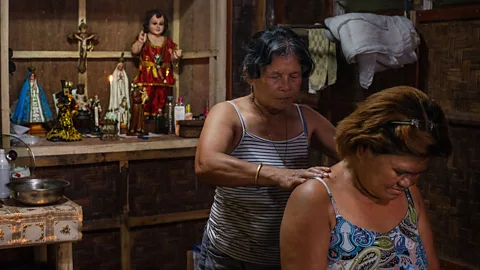 Simon Urwin
Simon UrwinAn island where healers are revered
Siquijodnons, as islanders are known, regularly visit the mananambal instead of a regular doctor. "The healers often succeed where Western medicine fails," says Borongan. A key part of their treatment is the prescription of homemade herbal medicines. "They make all kinds of natural remedies from the 300 or so medicinal plants that grow on the island. The abundance of curative vegetation is likely why folk healing has been so important to island life for centuries."
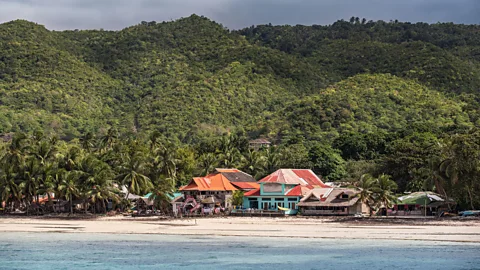 Simon Urwin
Simon UrwinAn enduring reputation for enchantment
Spanish explorers Juan Aguirre and Esteban Rodriguez were the first Europeans to arrive on Siquijor in 1565. Spotting the island from afar and thinking it was ablaze, they named it Isla de Fuego (Fire Island). "In fact, the light came from fireflies swarming over the island's molave trees", says Borongan. "This natural phenomenon (now extremely rare), was probably why Siquijor first gained a reputation for being enchanted, and why even locals from neighbouring islands were afraid of coming here."
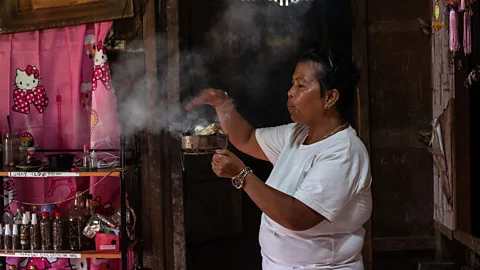 Simon Urwin
Simon UrwinWhere shamanic traditions and Catholicism converge
The Philippines converted to Catholicism in 1521, yet missionaries didn't arrive on Siquijor until the 1700s, probably deterred by rumours of witchcraft. "Shamanic traditions were unshakably rooted in island culture by then, the missionaries couldn't change that," says Borongan. "But over time, the two beliefs blended: healers recognised their skills came from a higher power which they eventually called God; they adopted religious icons; and many were drawn to live in the village of San Antonio." Antonio is saint of the lost, and for healers he is particularly symbolic since illness represents a loss of equilibrium in the body.
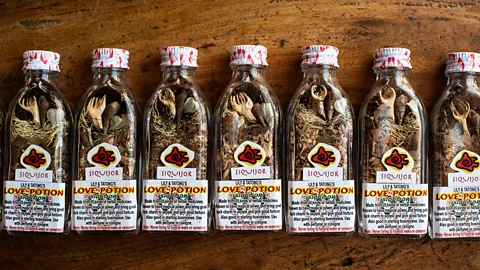 Simon Urwin
Simon UrwinPotions for love, lust and success
The use of herbal concoctions on the island is widespread, and they can be readily purchased in roadside shops for around 100 pesos (£1.40). One of the most popular is a love potion that contains 20 natural ingredients including pangamay, a twig eerily shaped like a hand. "It symbolises beckoning," says Lilia Alom, a potion maker for more than 30 years. "'Come to me', it says, whether that's romance or good fortune." Alom tells me that the potion cannot bring about everlasting love – "it's better for short-term lust" – but it's actually more suited to attracting success in business. "It can give you the confidence and positivity you need to become wealthy."
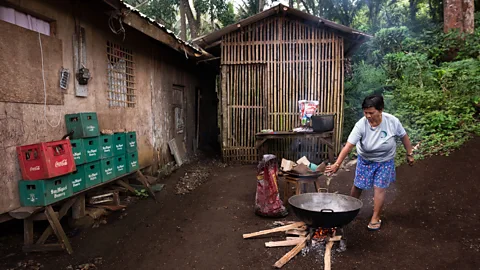 Simon Urwin
Simon UrwinBlack Saturday rituals for spiritual power
More than 200 ingredients make up the waxy black elixir minasa that is burned during to-ob – a ritual that smokes out spells and malign spirits. To make minasa, healers visit places of spiritual power on seven consecutive Fridays during Lent to gather elements as varied as insects, flowers, herbs, wild honey and melted cemetery candles. These are cooked only one special day of the year: Black Saturday (the day after Good Friday when Christ was laid in his tomb). This is considered a day of mourning in the Philippines, hence the word "black".
 Simon Urwin
Simon UrwinCommunication with the ancestors
Tigi is a practice that treats illnesses brought about by a deceased relative's spirit. Healer Pascal Ogoc uses a stick to divine the dead person's identity – "the stick bends or may even grow in length when their name is said out loud," he explains – before communicating with their spirit. "They often tell me they are unsettled because they've been forgotten," Ogoc says. "So, sickness is their way to spark a memory in the target."
More like this:
The cure is simple: the affected person makes a cash donation to the local priest and a mass is said in the departed's honour to appease their troubled soul.
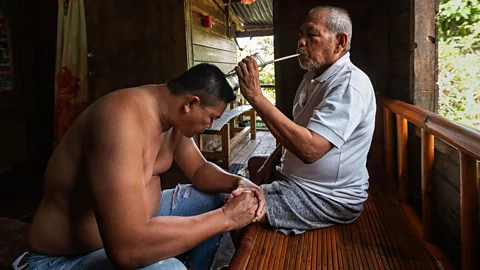 Simon Urwin
Simon UrwinRemoval of spells and spirits
Ruhelio Lugatiman is one of the few remaining practitioners of bolo-bolo. The ritual involves a jar filled with fresh water, a straw and a magic stone. Bubbles are blown in the water while the jar is moved over the patient; the stone removes spells and spirits causing the water to cloud and objects to magically appear. Lugatiman says he has seen everything from a grasshopper (the result of a barang) to a needle (from a voodoo doll curse) materialise during healing. The process is repeated until the water remains clear, signifying a clean bill of health.
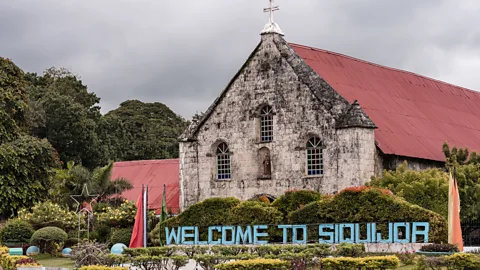 Simon Urwin
Simon UrwinBringing healing to the people
Healers don't charge for their treatments but request small donations instead. "It's a caring vocation, not one for profit; we live very simply," says healer Juanita Torremacha. As a result, their number has declined in recent years. In order to reverse the trend, the annual Siquijor Healing Festival has been held every Holy Week since 2006 in the Mt Bandilaan National Park. Locals and visitors are both welcome to attend.
"Everyone can create their own love potions and experience the rituals for themselves," says Borongan. "We want to show that this is not woo-woo. Our healing is powerful and for centuries it's what has made Siquijor unique. We don't want to ever lose that magic."
BBC Travel's In Pictures is a series that highlights stunning images from around the globe.
--
If you liked this story, sign up for The Essential List newsletter – a handpicked selection of features, videos and can't-miss news, delivered to your inbox twice a week.


Post a Comment